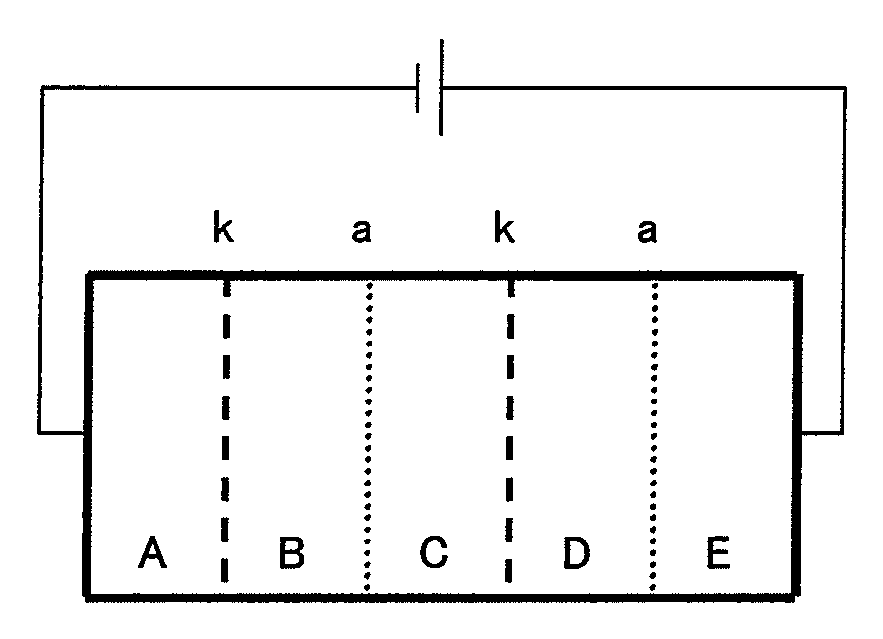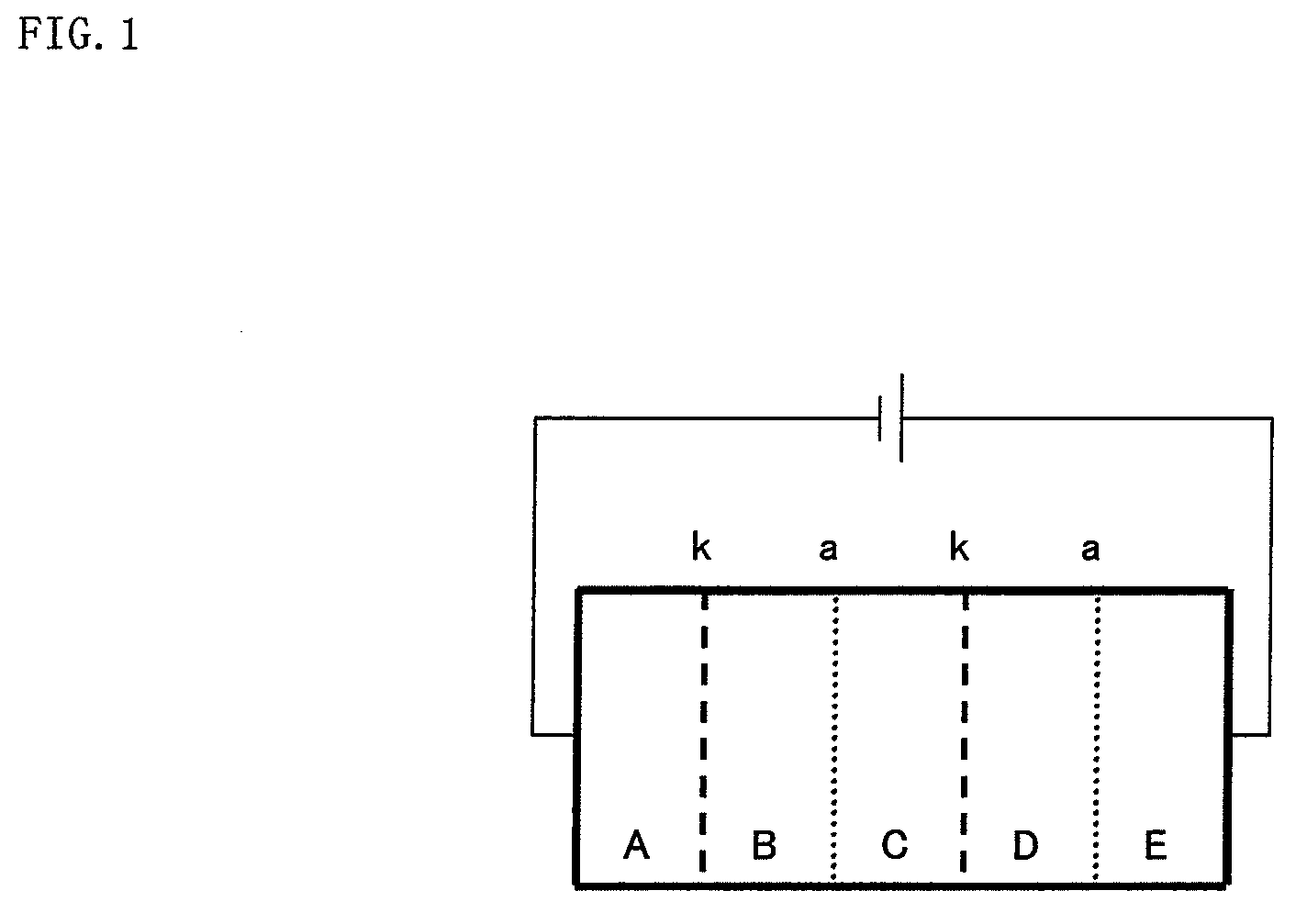Method for Producing Fine Particles of Salt, Hydroxide or Oxide, and Fine Particles of Salt, Hydroxide or Oxide Produced by Such Method
a technology of hydroxide or oxide and production method, which is applied in the direction of cellulosic plastic layered products, natural mineral layered products, and membranes. it can solve the problems of deteriorating methods, methods having respective problems, and not being able to directly recover the objective salt in the form of solids, etc., and achieve good simplicity and excellent productivity.
- Summary
- Abstract
- Description
- Claims
- Application Information
AI Technical Summary
Benefits of technology
Problems solved by technology
Method used
Image
Examples
example 1
[0169]Five polypropylene spacers each having an opening of 40 mm×60 mm and a thickness of 5 mm were disposed in an overlapped relation to each other in a length direction thereof so as to allow the openings to communicate with each other, and platinum electrodes each having a size of 40 mm×60 mm was fitted to opposite ends of the overlapped spacers, and respective chambers formed therein were closed, thereby forming an electrodialysis apparatus constituted from five vessels including a vessel A (electrode chamber), a vessel B (desalting chamber), a vessel C (concentration chamber), a vessel D (desalting chamber) and a vessel E (electrode chamber).
[0170]A communicating portion between the vessels A and B and a communicating portion between the vessels C and D were respectively fitted with a cation exchange membrane “CMX-SB” (tradename) available from Atoms Co., Ltd., whereas a communicating portion between the vessels B and C and a communicating portion between the vessels D and E we...
example 2
[0183]The electrodialysis and post treatments were carried out in the same manner as in Example 1 except for using a 0.25 mol / L FeSO4 aqueous solution in the vessel D, thereby obtaining iron (III) oxide [Fe2O3] which was produced by oxidizing the hydroxide obtained in the electrodialysis with dissolved oxygen.
[0184]The identification of the obtained product was performed by a powder X-ray diffraction method. In addition, the specific surface area of the product was measured by the same method as used in Example 1.
[0185]The results are shown in Table 1.
[0186]The thus obtained iron (III) oxide particles were measured using a small-angle X-ray scattering apparatus “RINT-TTR” available from Rigaku Co., Ltd., under the following conditions:
[0187]Scatterer Model: Sphere
[0188]Measuring Method Transmission Method
[0189]Matrix: Air
[0190]Analyzing Range: 0.200° to 6.000°
[0191]Step: 0.010°
[0192]Wavelength: 1.5418 Å.
[0193]As a result, it was confirmed that the obtained iron oxide particles had a...
example 3
[0194]The electrodialysis and post treatments were carried out in the same manner as in Example 1 except for using a 0.25 mol / L CuSO4 aqueous solution in the vessel D, thereby obtaining copper (II) oxide [CuO] which was produced by oxidizing the hydroxide obtained in the electrodialysis with dissolved oxygen.
[0195]The identification of the obtained product was performed by a powder X-ray diffraction method. In addition, the specific surface area of the product was measured by the same method as used in Example 1.
[0196]The results are shown in Table 1.
[0197]The subsequent procedure was conducted in the same manner as in Example 2 except for using the thus obtained copper (II) oxide particles. As a result, it was confirmed that the obtained copper oxide particles had an average particle size of 9.65 nm and a variance of particle size distribution of 55.6%.
PUM
| Property | Measurement | Unit |
|---|---|---|
| temperature | aaaaa | aaaaa |
| specific surface area | aaaaa | aaaaa |
| number-average particle size | aaaaa | aaaaa |
Abstract
Description
Claims
Application Information
 Login to View More
Login to View More - R&D
- Intellectual Property
- Life Sciences
- Materials
- Tech Scout
- Unparalleled Data Quality
- Higher Quality Content
- 60% Fewer Hallucinations
Browse by: Latest US Patents, China's latest patents, Technical Efficacy Thesaurus, Application Domain, Technology Topic, Popular Technical Reports.
© 2025 PatSnap. All rights reserved.Legal|Privacy policy|Modern Slavery Act Transparency Statement|Sitemap|About US| Contact US: help@patsnap.com


